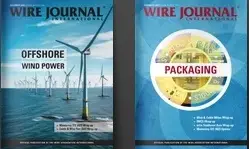The IMARC Group has released a comprehensive report titled “Enameled Copper Wires Manufacturing Plant Project Report 2025”. This report serves as a detailed guide for entrepreneurs and investors interested in setting up an enameled copper wire production facility. It provides an in-depth analysis of market trends, process flow, raw material sourcing, machinery setup, utilities, and manpower needs.
The report also covers financial aspects such as capital and operating costs, revenue projections, and profitability analysis. It outlines regulatory requirements, certifications, and risk factors that could influence the success of the project. The report is designed to help assess feasibility, optimize operations, and ensure efficient plant establishment in the burgeoning electrical wire industry.
Setting up an enameled copper wires manufacturing facility requires a thorough market analysis. This includes detailed insights into various operational aspects such as unit processes, raw material procurement, utility provisions, infrastructure setup, machinery and technology specifications, workforce planning, logistics, and financial considerations.
Enameled copper wire is an insulated conductor that consists of a copper conductor with a thin coat of insulation, usually made from polymer resin enamel such as polyester, polyurethane or polyimide. The enamel insulation provides good electrical insulation, high thermal resistance, and good mechanical protection. This prevents adjacent turns of wire from short-circuiting. Enameled copper wire is used in the production of electrical and electronic devices like motors, transformers, generators, inductors, and relays. It resists thermal flow for effective energy transfer applications, and its higher conductivity aids in the creation of compact coils.
The enameled copper wires market is experiencing growth due to increasing demand for electrical and electronic equipment, industrial automation, and renewable energy systems. Rapid urbanization and infrastructural development across the globe, along with growth in the automotive segment (EVs), are also driving the demand for electric motors and transformers. The market is further boosted by the rising use of energy-efficient appliances, investments in wind power generation, and the proliferation of solar power systems. The growing need for insulation materials, the miniaturization of components, and the use of copper in smart electronic equipment and IoT devices are additional factors propelling market growth.



